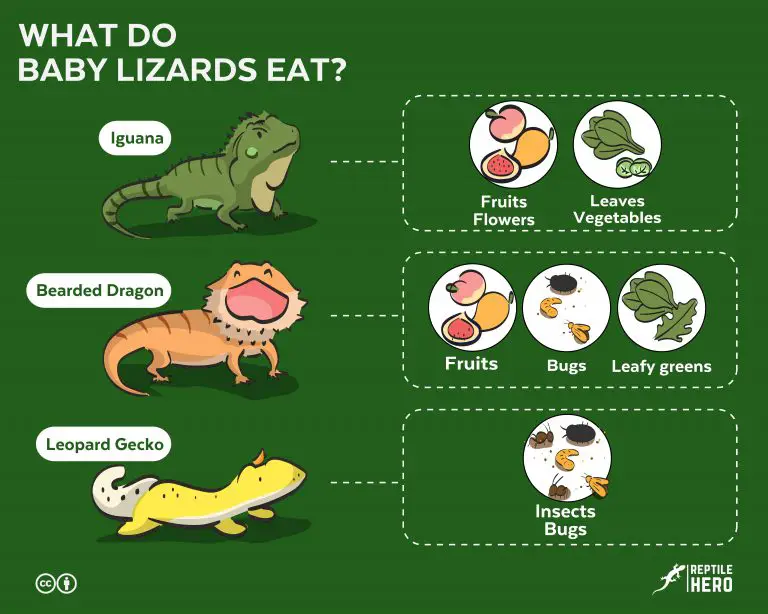Why is Your Leopard Gecko’s Nose Red? [9 Causes and Solutions]
A leopard gecko with a red nose? That’s no reason for celebration I am afraid. Your red-nosed gecko won’t be leading Santa Claus’ sleigh to light up the way. However, more serious problems may arise if it is ignored and left untreated—so what causes it and how does one solve it?
In general, a leopard gecko’s nose may become red due to:
- Shedding issues
- Bad heating set-up
- Aggressive eating habits
- Sharp/abrasive decor
- Animal attack
- Leftover live feeders
- Mite infestation
- Scale rot
- Stress
However, with proper husbandry, these can all be avoided. If treatment is necessary, contact a reptile veterinarian.
Unless your leo’s specific morph is known to have a red base color or markings, those circular red spots around its nares could be a sign of scale rot. If left untreated, the expected prognosis is poor and death will be inevitable—but you can prevent this!
9 Reasons a Leopard Gecko’s Nose is Red (+ Tips to Prevent Them)
The red nose of one leopard gecko may look a lot different compared to another—from a tiny pink-red scratch to a big bloody red gash. Either way, your gecko doesn’t have to go through such bad experiences!
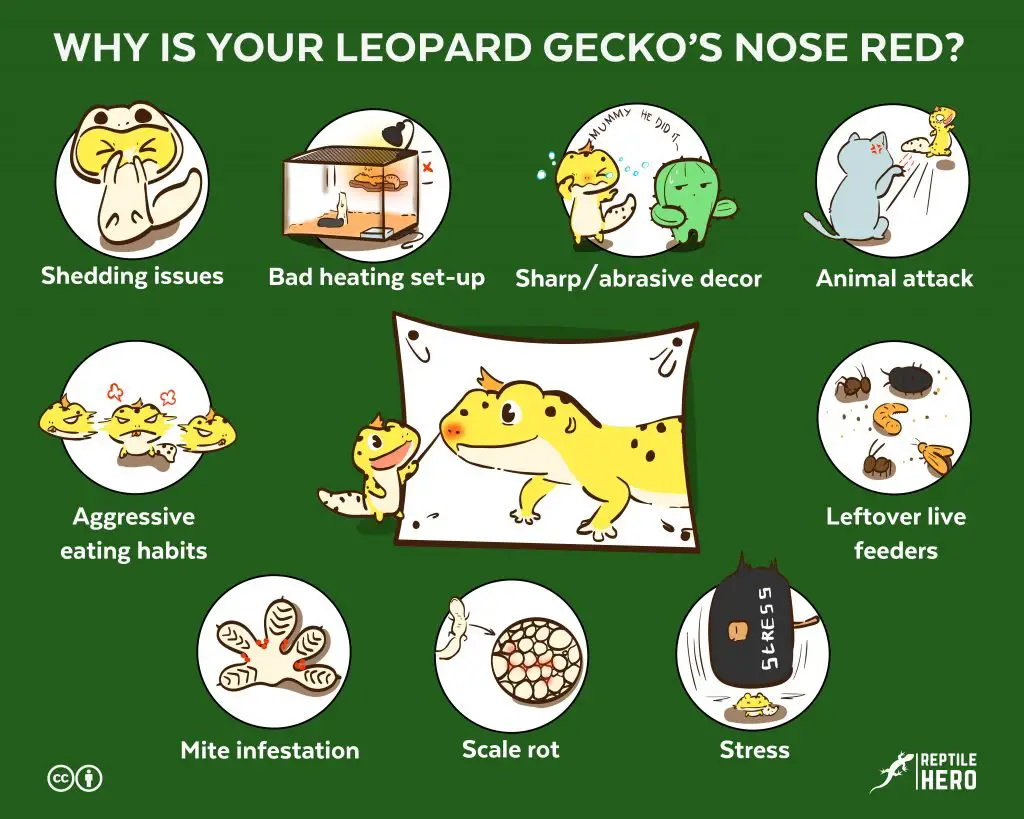
#1—Shedding Issues
Although it’s normal for a leopard gecko’s snout to be slightly red after shedding (ecdysis), its nose will appear noticeably raw and red due to problems encountered while sloughing off the layer of dead skin.
Three common issues encountered in shedding contribute to irritation and redness around a leopard gecko’s nose:
- Premature shedding
- Accumulation of shed skin
- Excessive shedding
Such problems can arise due to many reasons—dehydration, suboptimal humidity levels, nutrient deficiency or toxicity, and many more.
In some cases, leopard gecko’s nostrils may not only get inflamed from a bad shed but also bloody.
All the same, shedding-related injuries could get infected quite easily if not treated promptly.
Practical Tips for Prevention and Solution
Firstly, keep a good eye on your tank’s humidity using a hygrometer (here on Amazon). The overall humidity within your leopard gecko’s tank must fall within 30-40% [1].
If it falls below that, bump up humidity by misting more frequently. Do it manually with a spray bottle or automatically with a misting system that can be scheduled—either with a built-in program or a thermostat that can control equipment for humidity alongside heaters.
Besides that, place at least one moist hide by the middle of your gecko’s tank. Maintain a humidity level of 40-60% inside it to allow for stress-free shedding and make sure to use clean water for misting.
Once you notice that your leopard gecko’s scale starts getting dull in color, give it a bath and/or a sauna session to improve hydration and help soften the dead skin for easier shedding.
#2—Bad Heating Set-Up
Generally, a leopard gecko’s nose may become red and burned due to a badly designed heating set-up in its vivarium—such discoloration due to thermal burns may extend to other parts of its body (e.g., head, back).
In my opinion, three factors make for poorly designed a heating set-up in a gecko tank:
- Unregulated temperatures
- Inefficient heating equipment
- Distance between the heater and animal
Poorly Designed Heating Set-Up—Factor #1: Unregulated Temperatures
As I have said time and time again across multiple articles, no heat source should ever be left unregulated as doing so will only risk your precious gecko’s health and safety.
Experts with experience in the field and the clinic continuously warn against not using thermostats as heaters—especially high-powered units—can easily cause your tank temps to soar dangerously high at full power.
By and large, thermal burns are not only one of the most common conditions found in captive leopard geckos and many other reptiles, but also one of the easiest to prevent.
Poorly Designed Heating Set-Up—Factor #2: Inefficient Heating Equipment
Contrary to a still-popular belief—no, not all heaters are made equal. This is evidenced by the fact that different heating equipment emits different types of infrared radiation in varying degrees.
On the whole, heating devices that only radiate far-infrared or IR-B are considered highly inefficient as they only provide superficial, skin-deep warmth. They are notorious for causing substantial thermal burns in leopard geckos.
The following are considered inefficient heaters by most gecko keepers:
Do keep in mind though, the latter two can be useful during emergencies or when used together with more efficient heaters.
Poorly Designed Heating Set-Up—Factor #3: Distance Between the Heater and Animal
Many pet parents deck out their leopard gecko’s vivariums to encourage exploration and foraging. They may use hammocks and rock walls with overhangs to provide climbing opportunities.
However, some forget to take into account how close high-up spaces can allow their cold-bellied geckos to get too close to their heaters.
Even though they make sure to give their leo’s a good basking spot of 95°F (35°C) at a distance of 12 in (30 cm) from a heat lamp, they forget to consider that a climbing ledge only 6 in (15 cm) away from the lamp could easily reach a temp of 130°F (54°C) even if it is properly regulated.
Practical Tips for Prevention and Solution
When designing your leopard gecko’s heating set-up, one of your topmost priorities should include choosing the right thermostat.
Secondly, heaters that emit not only infrared C but also infrared A and B are recommended for sufficient and substantial heating of both leopard geckos and their vivariums. This includes halogen floodlights and carbon heat projectors.
Always ensure that your gecko cannot get any closer to an overhead heating element than 12 in (30 cm) as well. In case you want to provide raised platforms and hides, move them away from directly underneath the heater.
#3—Aggressive Eating Habits
Leopard geckos may sustain injuries and trauma as a direct result of their aggressive eating habits, lending to visibly red, swollen, and lacerated nares.
Some gecko pet parents have trouble feeding their picky eaters. Whereas other keepers have problems with very rambunctious eaters that constantly smack their faces into things while chasing after their meal.
Regardless, many experienced keepers would say that it’s completely normal for a leopard gecko to get a scrape or two around its nose now and then.
However, if your leo has a very deep feeding dish requiring it to jump from higher ground, its snout will probably hit the bottom of the bowl hard—at times, to the point of a nosebleed.
In other stories, I have also heard of leos getting bad cuts on their nose and lips while lunging after really fast feeder insects along very rough substrate materials such as reptile carpets.
Hard decors with pointed and serrated edges may also inflict similar damages on your gecko’s little nose if live insects seek shelter in such crevices.
Practical Tips for Prevention and Solution
Though it is normal for some sand to be present in a leopard gecko’s natural habitat, it is typically mixed in with other materials such as fallen leaves, pebbles, and soil which greatly reduces overall coarseness. So I would recommend providing something similar for your gecko tank’s substrate.
On another note, it is also advisable to swap out feeding bowls that are too deep with much shallower dishes to give your gecko an easier time in capturing live insects, all the while keeping them inside.
Some keepers and breeders have also found that lining the bottom of the dish with a paper towel or a thin layer of soil-based substrate for some cushioning can be quite helpful.
#4—Sharp/Abrasive Decor
All things considered, a leopard gecko whose nose is red, scratched, and/or cut is likely to have been injured by a sharp and abrasive decor or furnishing in its enclosure.
From the early sections on shedding issues and aggressive eating habits, you can see how overly sharp and abrasive decors and furnishings in your gecko’s tank can be dangerous.
Both custom-made and mass-produced products may have such imperfections. They have exposed wires and the like which could be hard to notice until the keeper themselves get injuries from it.
These can cause anything from a faintly red graze to a massive gash on your gecko’s nose. Considering how leopard geckos need a naturalistic enclosure, these open wounds can easily harbor bacteria and parasites which could result in infection.
Practical Tips for Prevention and Solution
Inspect every object you plan on placing in your leopard geckos tank thoroughly.
Golden rule: If you get cut by simply lightly running your finger along a tank decor or furnishing, your leopard gecko is sure to get injured by it too.
But, of course, it would be wasteful to throw them away. What you can do instead is lightly smooth out sharp edges and surfaces with a sheet of sandpaper or a small power tool with a sanding/polishing attachment.
#5—Animal Attack
On average, leopard geckos that are either permanently housed with other geckos (i.e., “cohabbed”) or left with other pets (e.g., cats) unsupervised are at greater risk of receiving deep, red, and deadly lacerations across their body—snout, back, tail, etc.
This is also one of the main reasons why we, as well as many long-time pet parents, actively advocate against cohabbing and letting leopard geckos “play” with your other—much bigger—beloved pets.
In extreme cases, attack wounds from cage mates and/or other pets have caused scabbing over the nostrils, causing significant breathing issues for leopard geckos. Sadly, most stories I’ve seen and heard so far didn’t end happily.
Now, I’m fairly certain that there will be a handful of people reasoning to themselves that their cute little scaly and furry babies get along too well for any of these to happen.
However, much of the gecko owners from the stories I have mentioned already have said the same thing too—but they ended up regretting it.
It is also worth noting that this can sometimes happen in breeding pairs when the female rejects the male leopard gecko attempting to mate with it.
Practical Tips for Prevention and Solution
Needless to say, I strongly advise against cohabiting leopard geckos unless you have years of professional experience in keeping, breeding, and rescuing or rehabilitating reptiles.
If you do have geckos housed together in a single enclosure, separate them immediately even if they have not shown signs of aggression toward each other so far. Bad cases of cohabbed leos far outnumber good cases for me to recommend you to do so with a clear conscience.
Additionally, make sure to get a good quality tank that secures your leopard gecko from any other pet in the house—preferably one with a lock-and-key mechanism.
#6—Leftover Live Feeders
Despite being rare nowadays, there are still reports of leopard geckos suffering from bloody lesions on the nose, in addition to other vulnerable and soft body parts, as a result of getting attacked and bitten by leftover live feeder insects.
Unfortunately, many inexperienced leopard gecko owners with limited resources on proper reptile husbandry practices fail to consider the possible consequences of leaving leftover live feeder insects in a leopard gecko tank. Even worse, their set-ups are bare and sterile.
Back in the early days, this was the norm when it came to keeping leopard geckos due to the lack of knowledge regarding proper diet, care, and housing for them.
These days, however, I would say that most beginner reptile keepers are aware that it is never a good idea to leave crickets and other uneaten live insects in a gecko’s vivarium.
Sadly, I still come across occasional rescue stories—with geckos having really bad nose injuries from being neglected in tanks that are infested with starving crickets.
A close friend of mine has also returned home only to see her leopard gecko in a similar situation after forgetting to tell her brother not to do so while she was away for vacation.
Practical Tips for Prevention and Solution
As a rule, keepers should not dump live insects into their gecko’s tanks with the expectation that they will be able to consume all of it without any trouble whatsoever.
Rather, it is advisable for leopard gecko owners to only present one insect at a time to ensure that no live feeder will be left in the tank. Doing so also prevents overfeeding.
If you would need to leave your leopard gecko behind (e.g., vacation, work trip), leave your gecko in the care of a knowledgeable friend or professional to ensure your gecko’s well-being while you are away.
#7—Mite Infestation
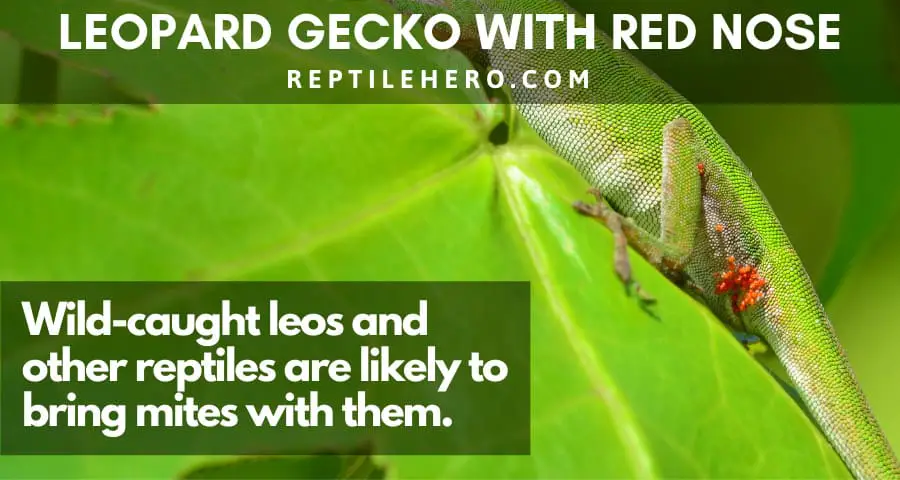
Mites that have been documented to infest leopard geckos are dark orange, brown, black, or red. Due to their size and color, mite infestation in geckos may look like skin discoloration—on the nose, eyes, vent, etc.—until a close examination is done.
For the most part, captive-bred leopard geckos are typically free of mites.
But if you are an avid reptile expo goer, the type to pick up unsanitized wood pieces, or planning on getting wild-caught geckos, you may be introducing heaps of mites into your pet’s tank without even knowing it [2].
To determine whether the discolored globs on your gecko are mites or not, do the following:
- Get a penlight and a magnifying glass (or a jewelry loupe like this one on Amazon)
- Carefully take your gecko out of its enclosure
- Temporarily place it in a small plastic box lined with a plain white paper towel
- Inspect the discolored patches on your gecko’s body
If you see tiny eight-legged organisms crawling about your gecko’s scales or on the paper towel below, then I’ve got bad news for you—you have a mite infestation on your hands.
Regrettably, prevention is much easier than cure in such cases as well.
Practical Tips for Prevention and Solution
To avoid having to ever deal with these nasty blood-sucking creatures on your leopard gecko, remember and abide by these precautionary measures:
- Only keep captive-bred gecko specimens
- Quarantine newly acquired geckos
- Inspect wood hides and ornaments for mites
- Deep clean your tanks at least once a month
In the unlucky event that you do experience a mite infestation, give your leopard gecko a diluted povidone-iodine bath and gently dry it off with a towel. Then get in touch with your exotic veterinarian.
After that, clean and disinfect your gecko’s tank and everything in it except for all the porous materials—throw those away and replace them if you’d like.
#8—Scale Rot
Multiple red sores scattered all over a leopard gecko’s body, including the mandible and nares, are symptomatic of scale rot.
The term scale rot is used as an umbrella term to refer to scale-related illnesses such as:
- Secondary scale/skin infections
- Bacterial abscesses
- Ulcerative dermatitis
Ulcerative dermatitis, in particular, has been documented in breeding colonies of leopard geckos due to the yellow fungus (Chrysosporium anamorph of Nannizziopsis vriesii) [3].
Scale rot due to yellow fungus in leopard geckos initially manifests as shedding issues and patches of scale discoloration (yellow, brown, or gray). But as the infection progresses and the color becomes dark red—almost crimson—and develops into open lesions and/or nodules.
Common causes for scale rot are as follows:
- Nutritional deficiencies (i.e., vitamins A and C)
- Unsanitary living conditions
- Improper humidity and temperature
- Molds and fungi
Practical Tips for Prevention and Solution
Scale rot primarily caused by yellow fungus is considered to have poor prognosis and treatment outcomes by experts, oftentimes ending in the reptile’s death.
That said, it is much better to prevent ulcerative dermatitis in leopard geckos by:
- Providing a balanced diet with insects and necessary supplementation
- Spot-cleaning poop or switching to a bio-active tank set-up with a clean-up-crew
- Maintaining optimal humidity and temperature levels in the vivarium
#9—Stress
A gecko undergoing a considerable amount of stress due to various and sometimes unclear reasons—underlying conditions and re-homing—is at heightened risk of developing infections in normally harmless abrasions resulting also in damaged red nares.
Slow recovery: Similar to when we are sick, stress doesn’t lead to quick recuperation in reptiles. Add that to the fact that they naturally have slower recovery rates and the picture becomes crystal clear—stress can easily make injuries and illnesses take a turn for the worst-case scenario.
Furthermore, leopard geckos are as likely as their reptile cousins to engage in self-destructive behavior when dealing with unnecessary and extreme distress [4].
Case in point, some owners were shocked to find their leopard geckos injuring their nose after persistently glass surfing in its enclosure.
Others have also been observed to enact snout rubbing repeatedly, to the extent of permanently disfiguring their nose.
Practical Tips for Prevention and Solution
Give new leopard geckos ample time and space for acclimation to reduce stress and prevent bringing about all the aforementioned causes of red wounded gecko snouts.
It is also important to provide leos with numerous hiding spots, shade, and plenty of foliage—be it fake or live plants. All of these combined will give a sense of security against possible predators which—I hate to break it to you—normally includes you.
Covering up two to three sides of your gecko’s tank with wallpaper, or regular colored paper can also reduce the feeling of being exposed and vulnerable.
Red-Nosed Leopard Gecko’s Injury or Wound? What to Do?
To reduce the chances of infection and further damage on a leopard gecko’s already injured red nose, follow these easy steps:
- Disinfect. Clean the wounded area of debris, poop, and blood, among many things. This can be done with a diluted povidone-iodine solution (here on Amazon)—the color should resemble that of a strong cup of brewed tea.
- Protect. Apply a thin layer of reptile-safe topical cream or gel onto the wound like this one on Amazon. When the lesion is deep, proceed to the next step.
- Quarantine. Temporarily place your gecko in a more sterile hospital setup. If your gecko starts exhibiting other odd behaviors and signs (e.g. lethargy, anorexia), take detailed notes.
- Visit the vet. Call up your veterinary doctor for the earliest possible appointment and prepare for your travel to the clinic. If given any prescription medicine, remember to follow their instructions carefully.
When Is It Normal for Leopard Geckos to Have Red Noses?
It is only normal for a leopard gecko to have a red nose due to its natural coloration, especially for morphs with very deep orange-red base colors or markings—like mandarin blood tangerine or smaug.
Other than this special color pattern, the rim and insides of a leopard gecko’s nose also have a subdued pink-red tone.
Also, as one would correctly assume a leopard gecko’s nose will undoubtedly turn red under very dim lighting or red lights.
A Curious Case of Color-Changing Calcium Carbonate Powder
Interestingly, I have once read a story of a leopard gecko owner seeing his pet’s entire snout covered in a thick red substance—horrifyingly similar to blood—after its strawberry flavored calcium powder was moistened.
As fascinating as it is though, I have yet to hear similar stories to corroborate his claims. So for now, I’m chalking it up as simply another myth on keeping leopard geckos.
Takeaways
A leopard gecko may develop reddening of its nose due to: shedding problems, poor heating set-up, bad feeding habits, abrasive tank materials, injuries from other animals, live feeder bites, mites, scale rot, and stress.
Generally speaking, much of the causes of injury or damage to a leopard gecko’s reddened nose can be easily prevented with proper and updated housing and husbandry practices.
Nevertheless, it is recommended to get the expert opinion and assessment of an experienced veterinary doctor—preferably one specializing in reptile care.
A red nose on a healthy leopard gecko is only considered normal if it is due to its natural color morph.
Sources
[2] http://www.anapsid.org/mites.html
[3] https://journals.sagepub.com/doi/full/10.1177/0300985812465324
[4] https://www.americanhumane.org/app/uploads/2016/08/op-guide-reptilecare.pdf

![How Fast Does A Gecko Decompose? [4 Factors]](https://www.reptilehero.com/wp-content/uploads/2021/04/How-long-does-it-take-gecko-to-decay-infographic-768x614.jpg)

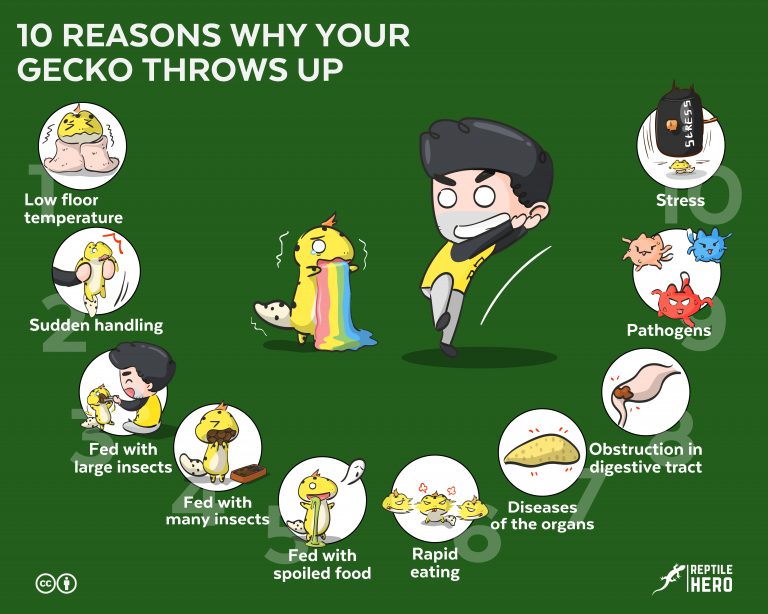
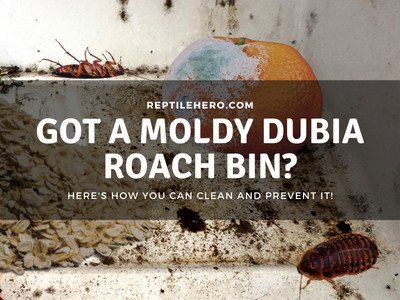
![Do Geckos Eat Their Own Poop? [The Science of Coprophagia]](https://www.reptilehero.com/wp-content/uploads/2021/08/Gecko-eat-poop-cc-1-768x614.jpg)
